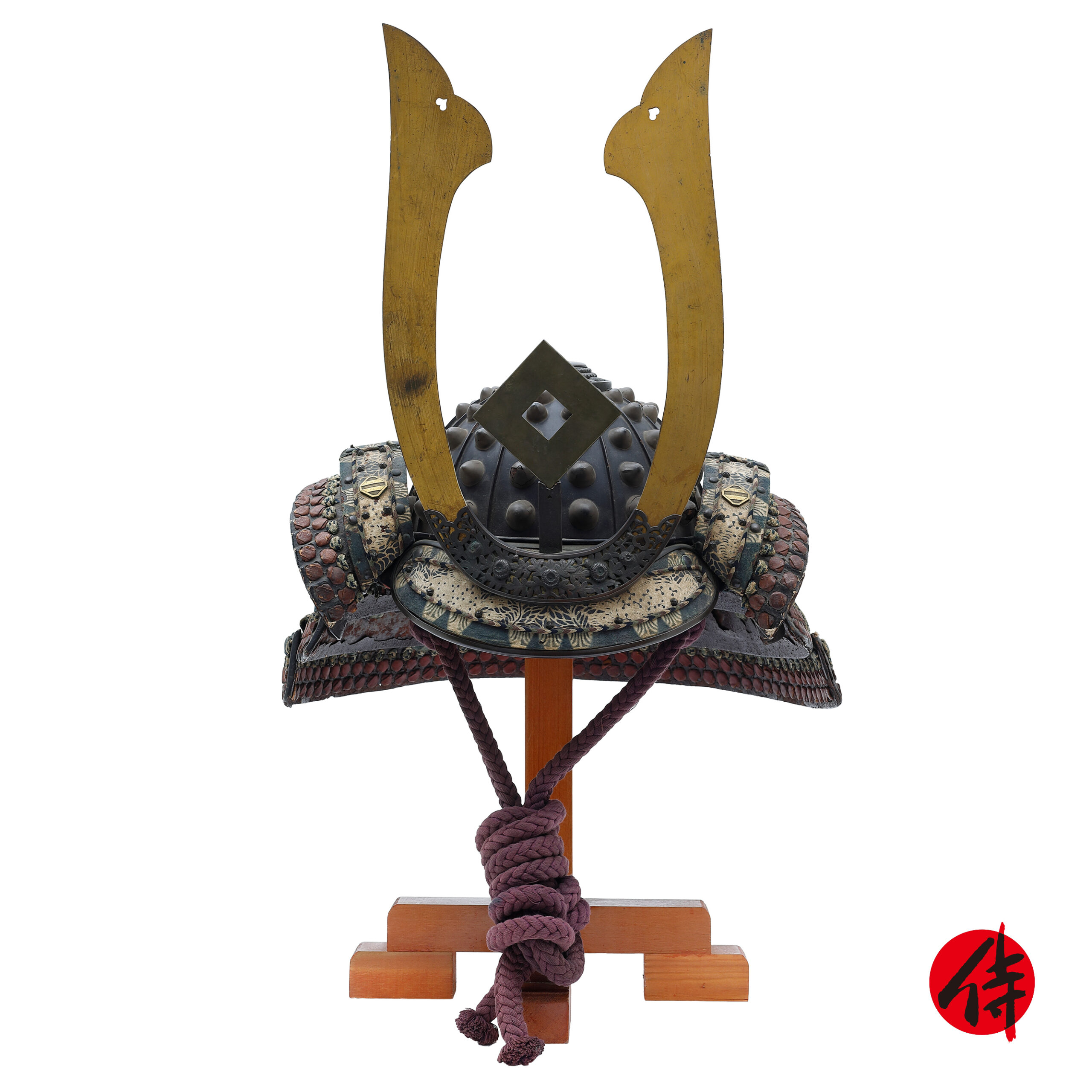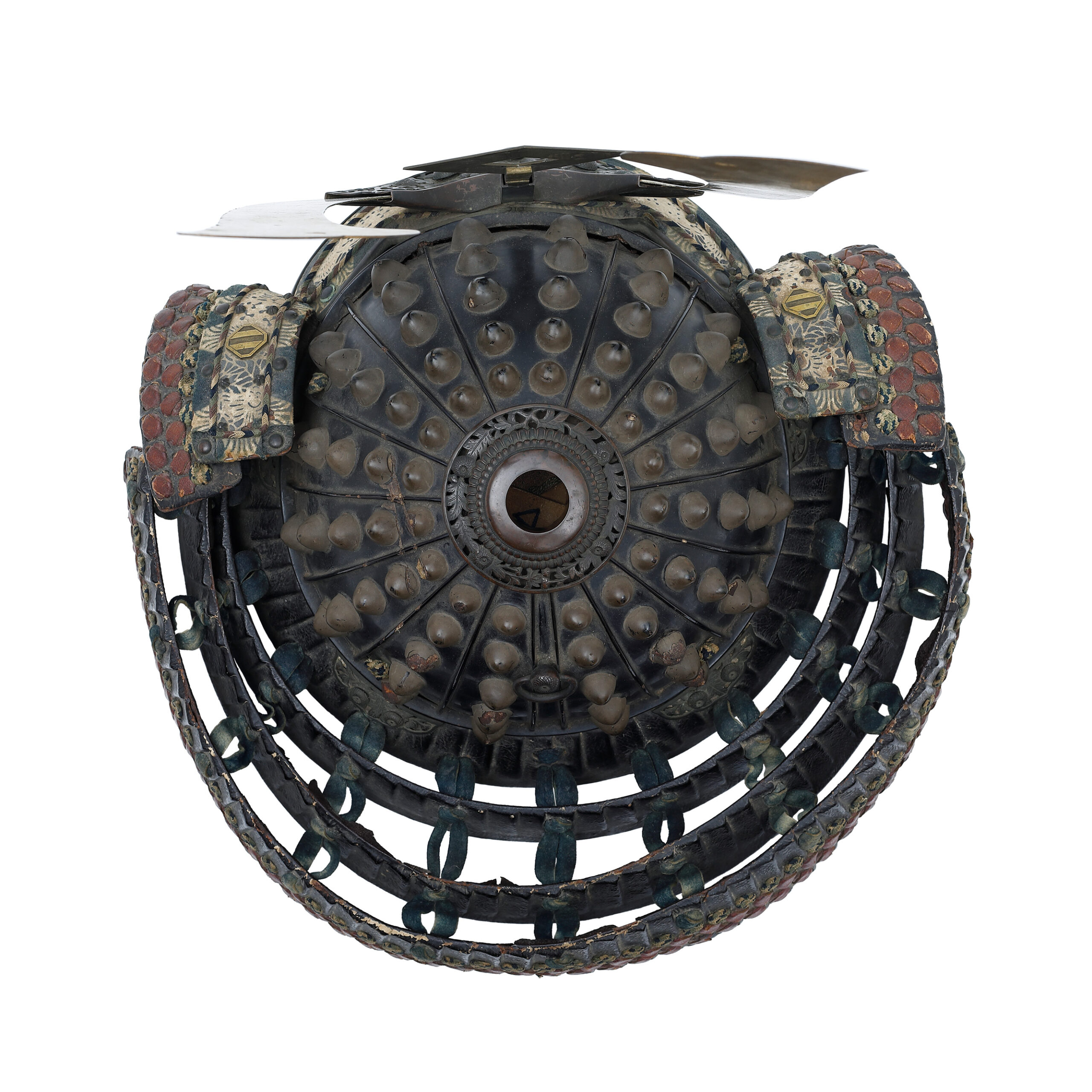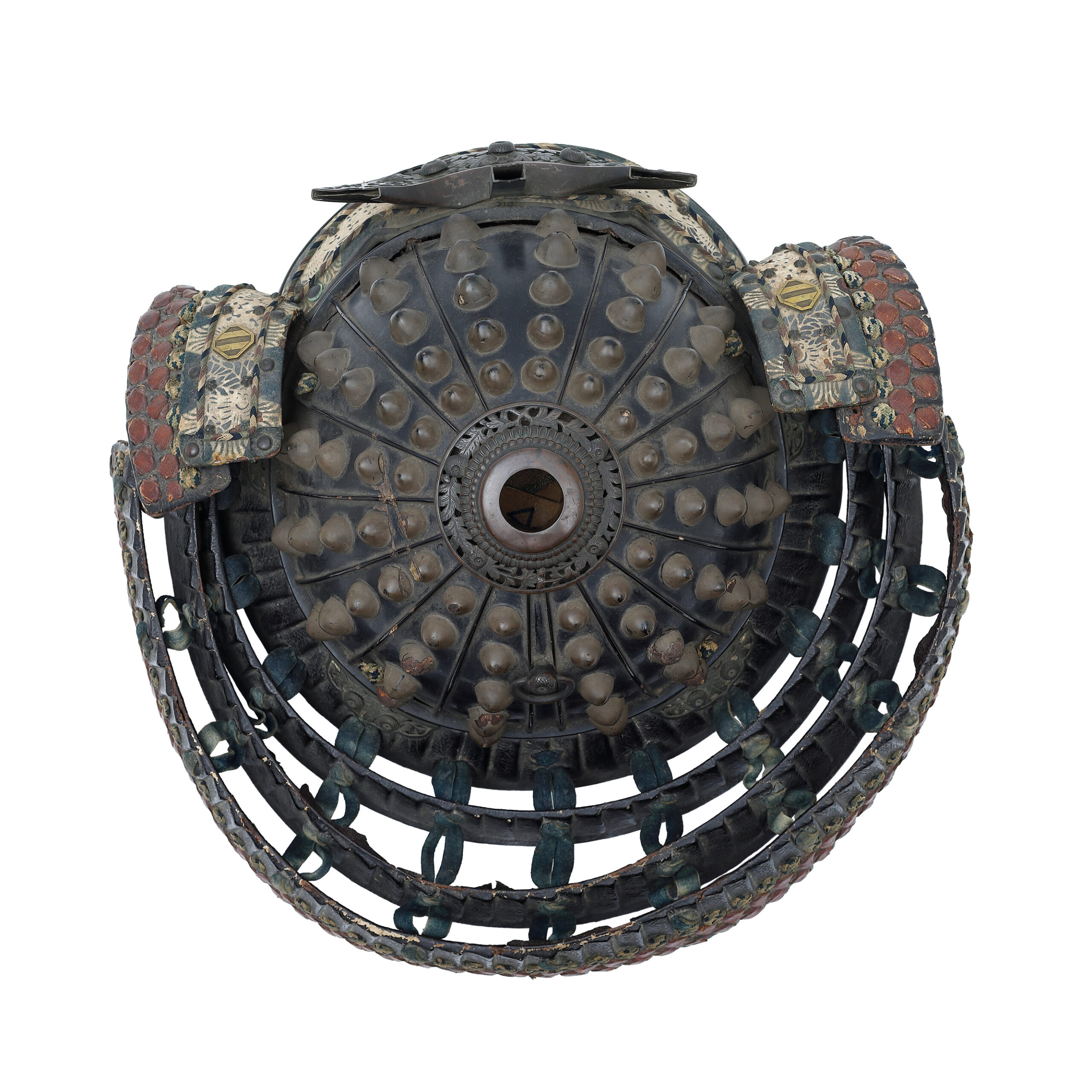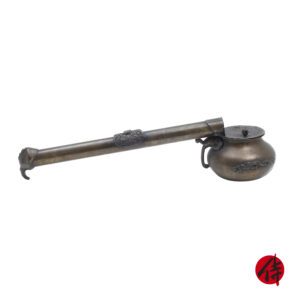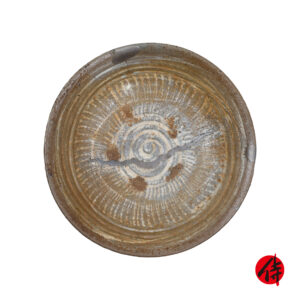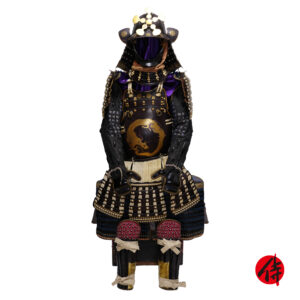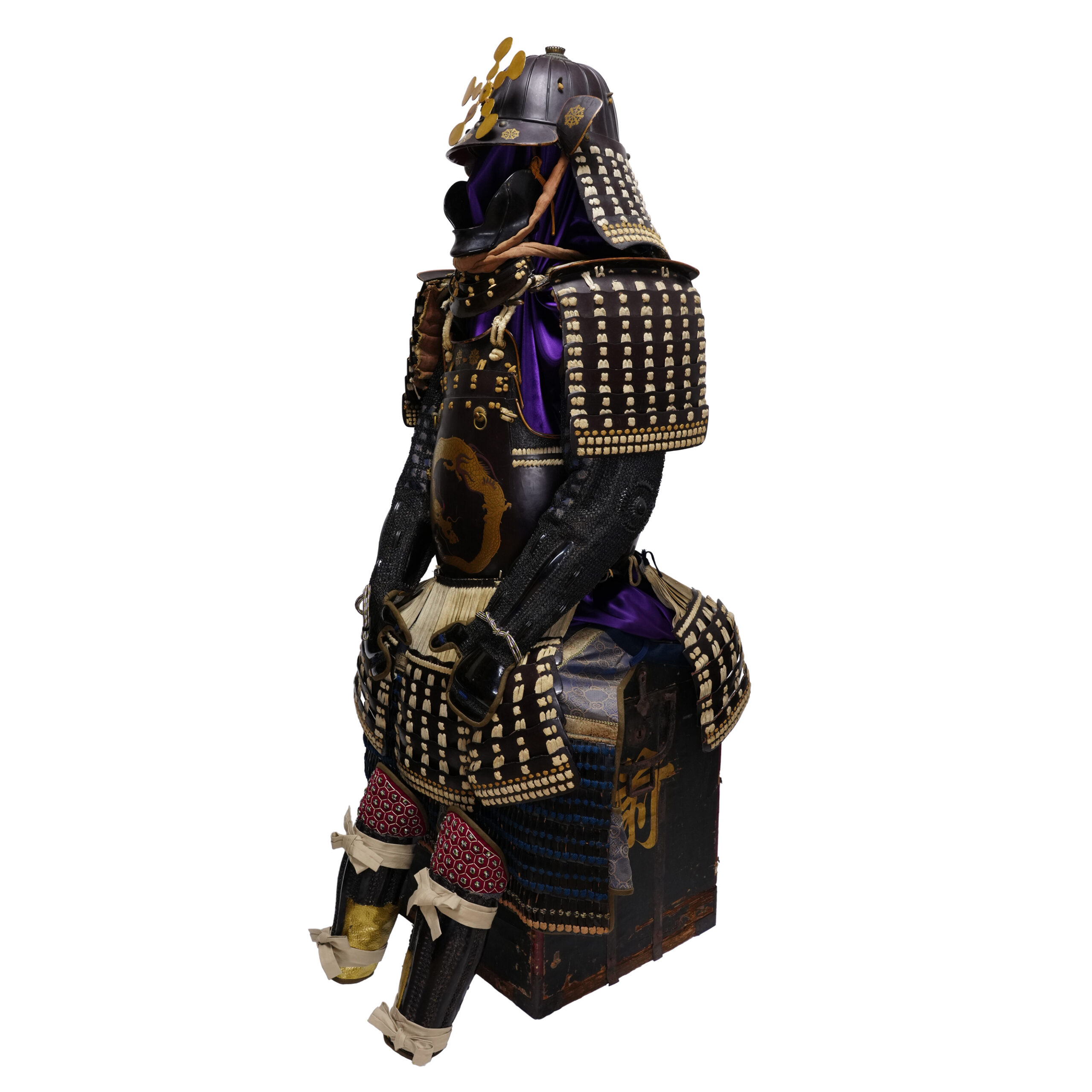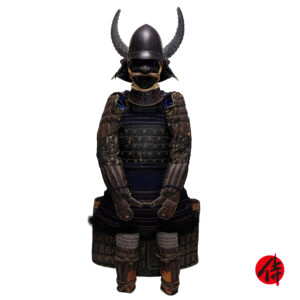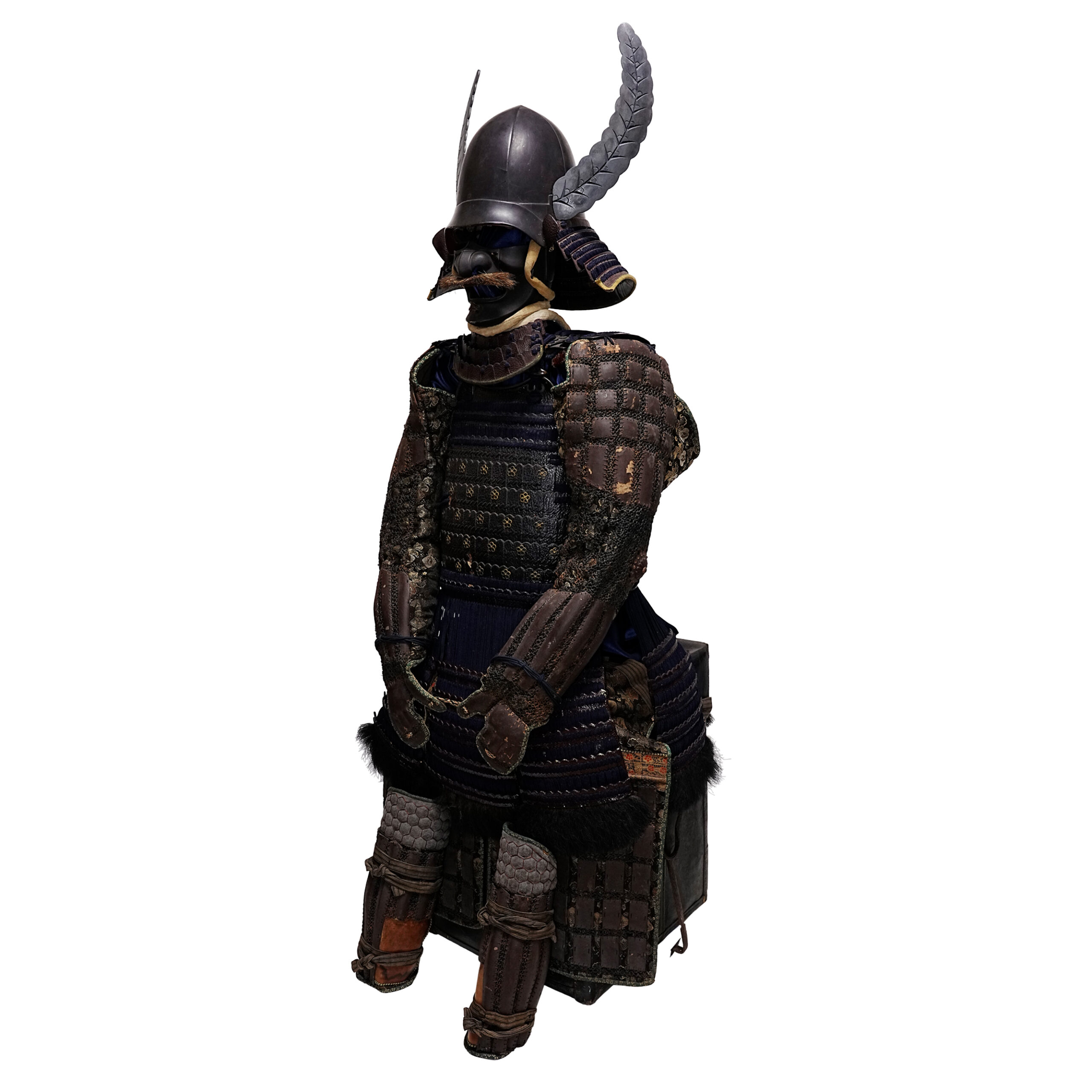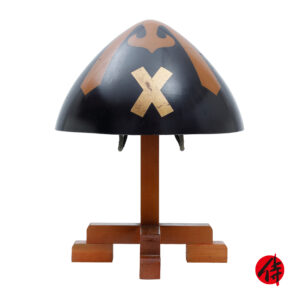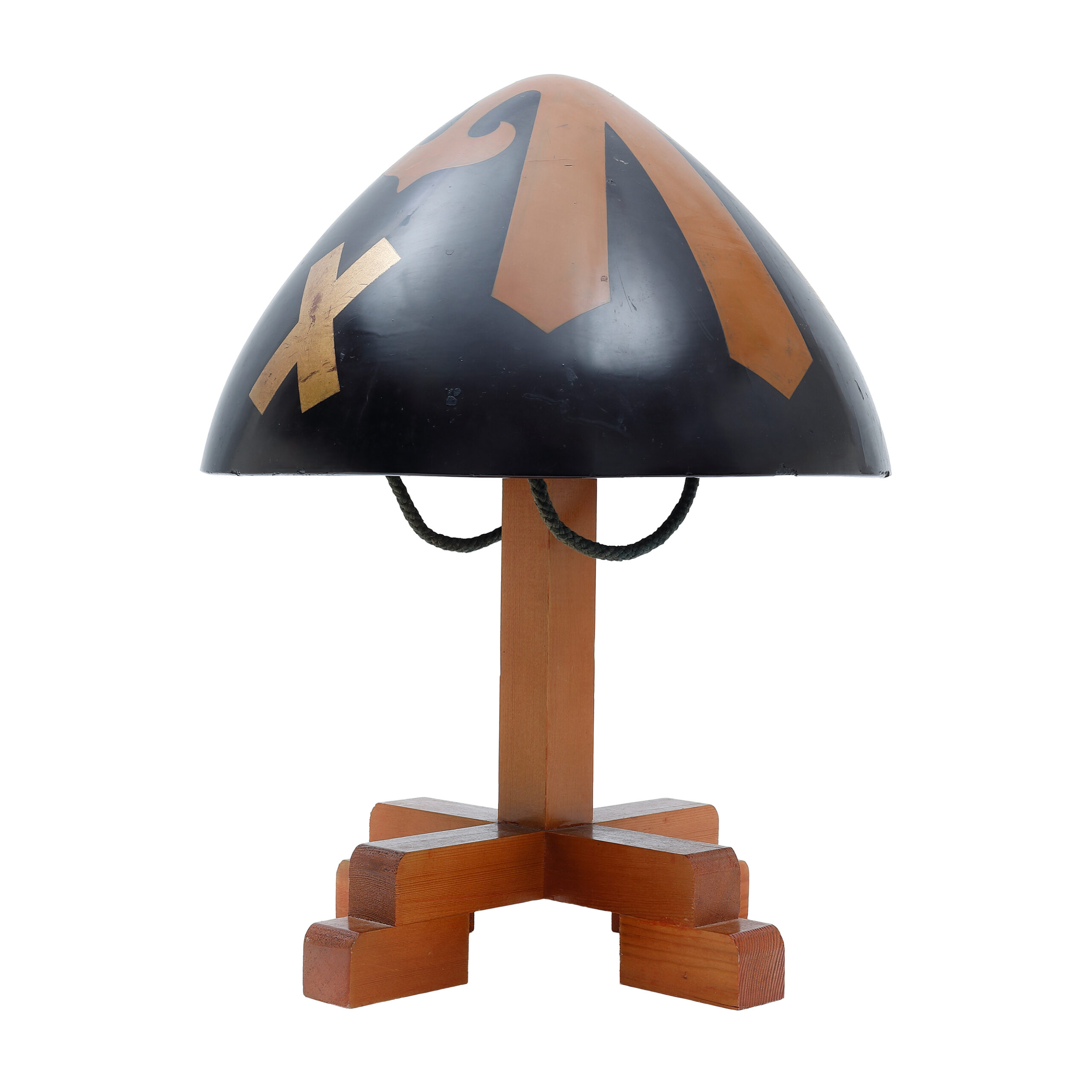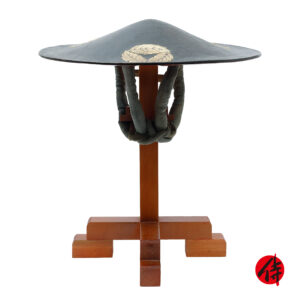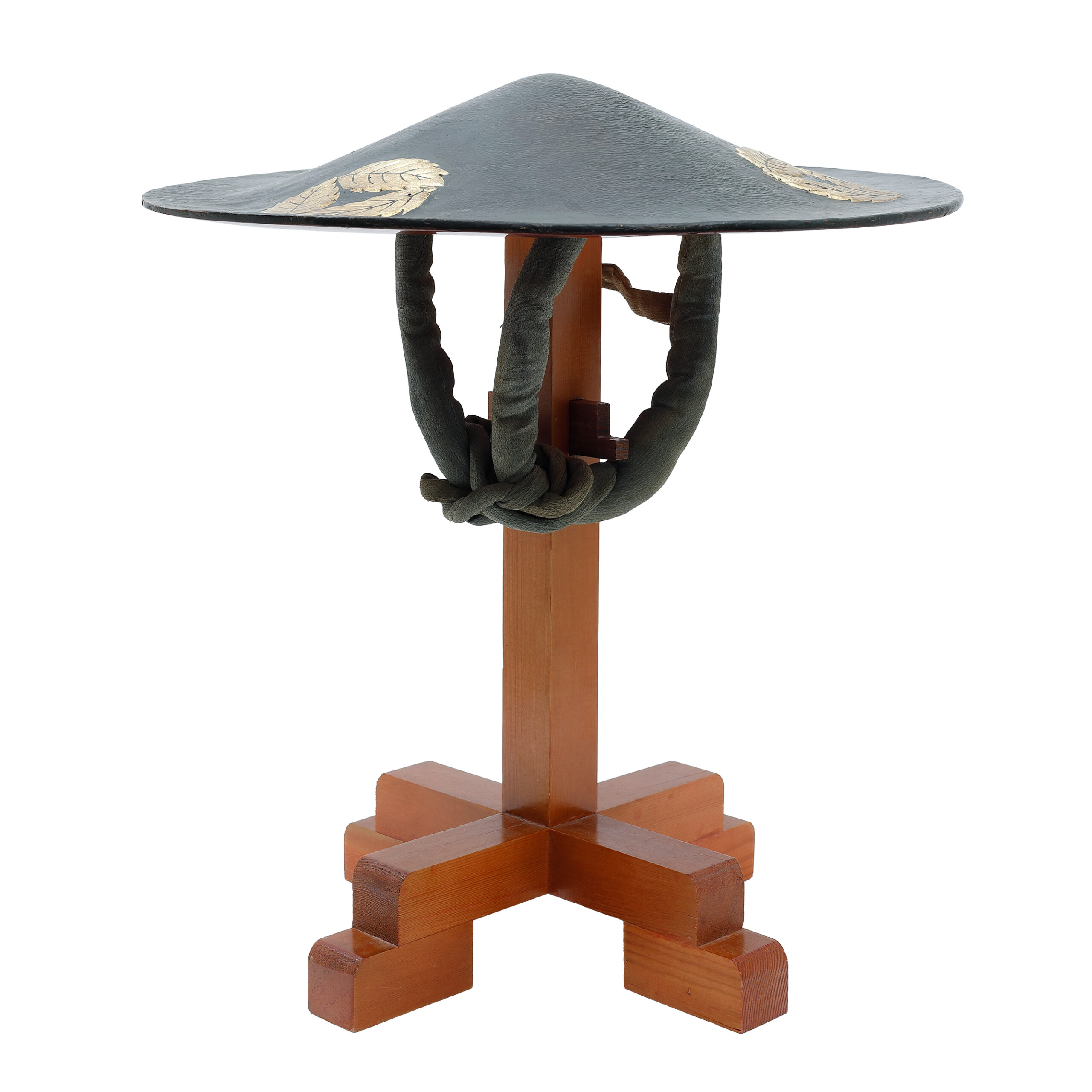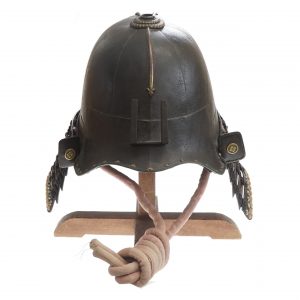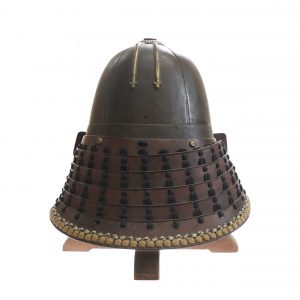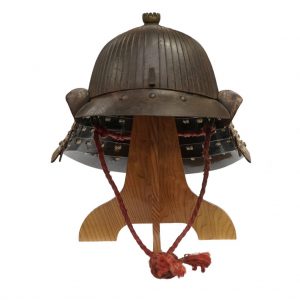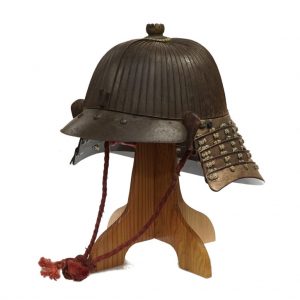Antique Samurai Helmet Jurokken Hoshi Kabuto with Koushu Tokubetsu Kicho Shiryo Certificate

Period: Mid Edo Period (appraised by The Association for the Research and Preservation of Japanese Helmets and Armor)
Prime Material: Iron
This Kabuto (兜, helmet)’s style is the Hoshi Kabuto (星兜). The Hoshi Kabuto is a type of Samurai helmet that was born in the middle of the Heian period (around 888-1068). Rivets that hold iron plates together, and these rivets are called the Hoshi (星, star). In the Edo period, artisans made Kabutos not only Kawari Kabutos (please check the paragraph below) but also ancient-style Kabutos. For example, in the case of the Hoshi Kabuto, the Hoshis become smaller toward the top of the head; this form is called the Rinotori (厘劣り). It differs from the old-fashioned Hoshi Kabuto, in which all the Hoshis were the same size.
The Kabuto is a protector of the head. When people started using the Kabuto, it was initially designed for practical use. However, the principal purpose of its design has changed with time; Samurai warriors tried to express their dignity, personality, or religion by wearing the characteristic designed Kabutos. According to a theory, these uniquely designed Kabutos were made from the late Muromachi (室町, 1336-1573) to the Edo period (江戸, 1603-1868). This type of Kabuto is categorized as the Kawari Kabuto (変わり兜), and a variety of materials were used to create them. For example, animal fur, seashells, plants, and paper were used as materials for decorations.
Here, we are introducing you to a little bit more about the history of Kabutos. Before the Kawari Kabuto’s production, the Suji Kabuto (筋兜) appeared during the Nanbokuchou (南北朝, 1337-1392) period. At that time, the tactic was gradually changed from the piggyback fight style to battle with the Tachi (太刀) sword and the Naginata (薙刀, Japanese halberd) on the ground. Therefore, there was a rise in demand for the weight-saving of the Kabuto. Also, in order to turn the attack by swords, a new type of structure was invented: the Suji Kabuto (筋兜). Its form slides swords’ attacks when weapons hit the Kabuto. It is said that the production of the Suji Kabuto prospered in the Muromachi period.
This Kabuto has black Shikoro (錣, a device attached to protect the area from the back of the head to the neck), and green and red Odoshi (縅, string that ties the boards together) is used to connect each plate part. As this Kabuto’s certificate says, this Shikoro is made of Nerikawa Kurourushi Nuri (煉革黒漆塗). Nerikawa (煉革) is a cowhide roasted over a fire or soaked in glue water to harden it. And Kurourushi-Nuri means black lacquer applying. Since leather is lighter than a steel plate, we estimate that a Kabuto with leather-made Shikoro was more comfortable than all iron-made Kabuto for a wearer while still fulfilling its purpose of protecting the neck.
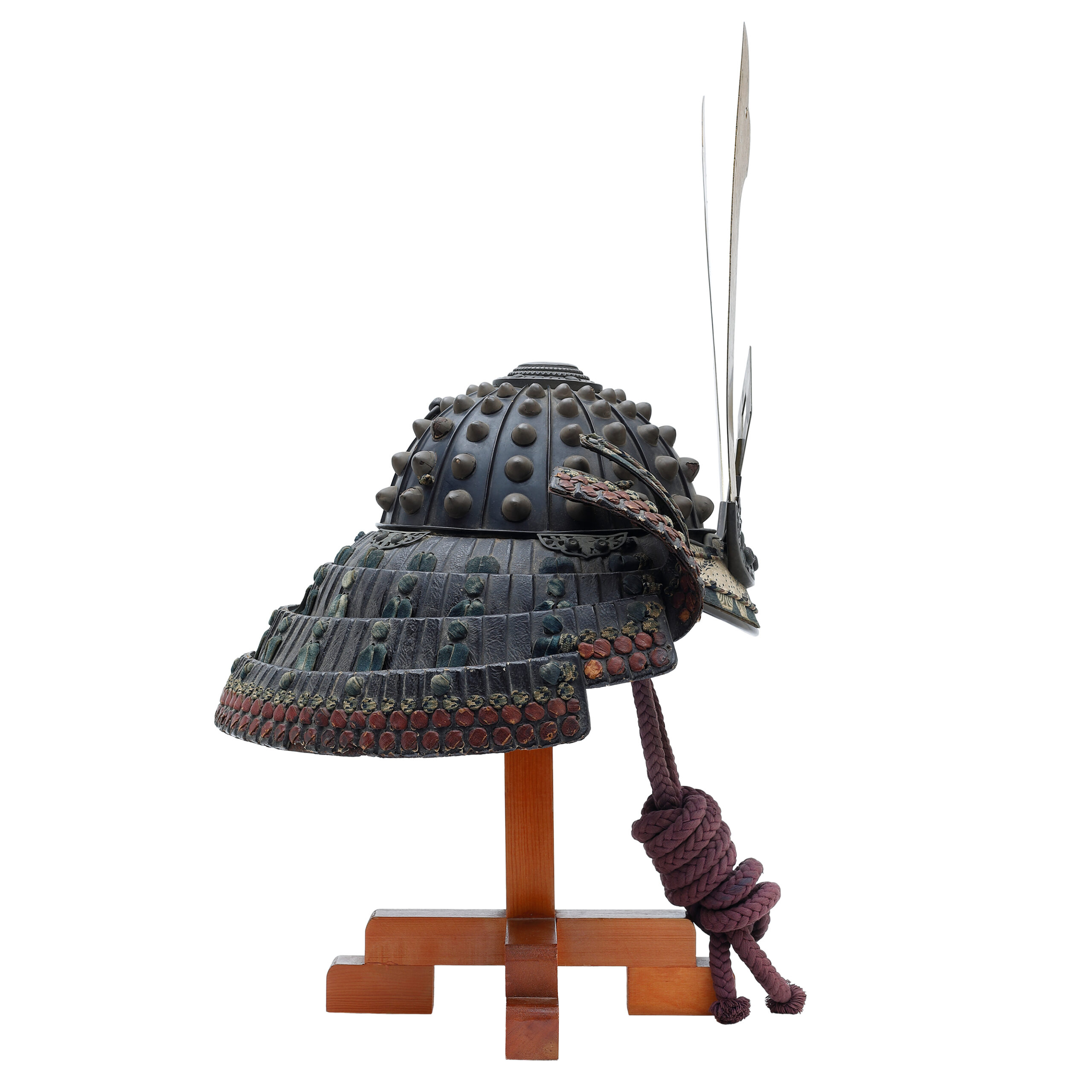
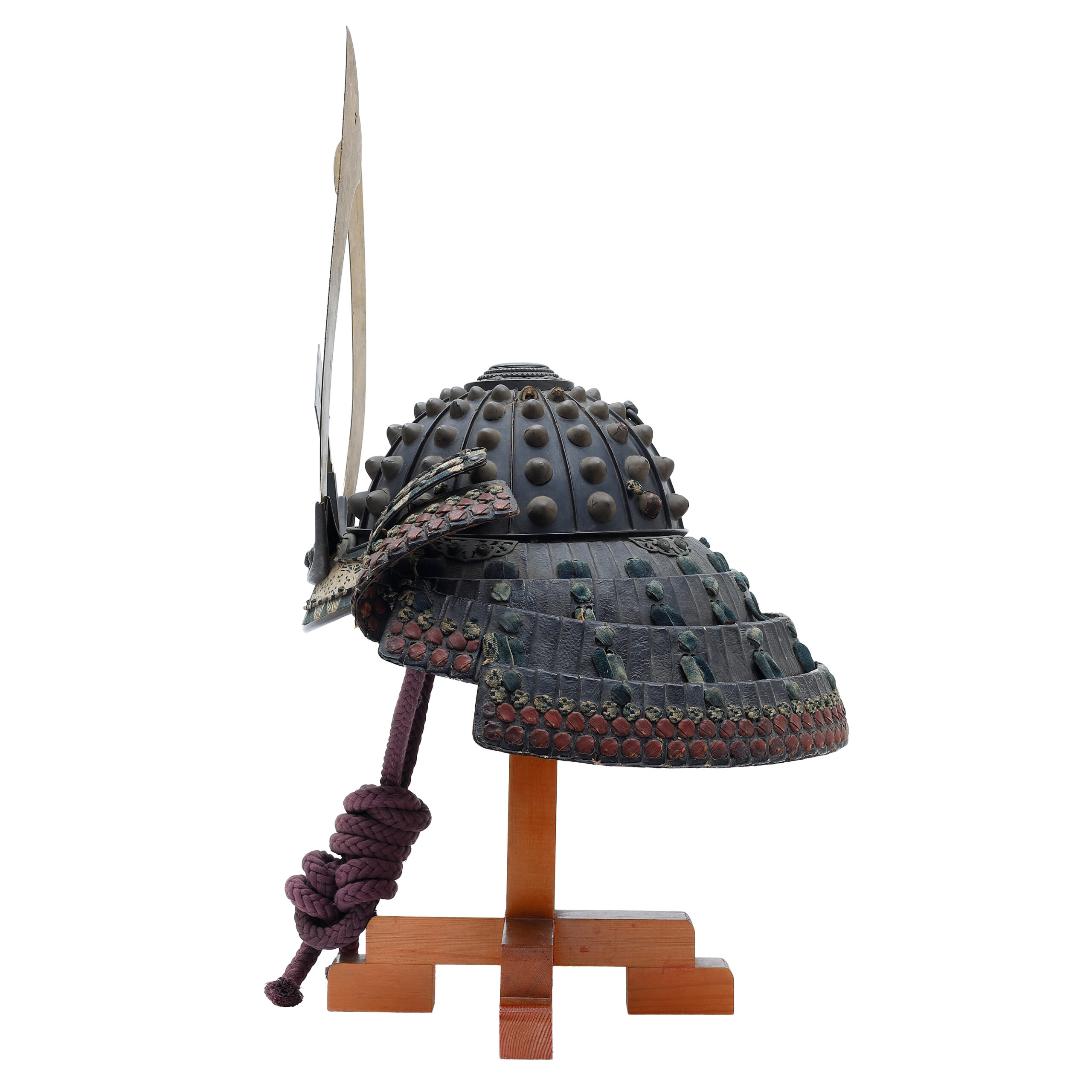
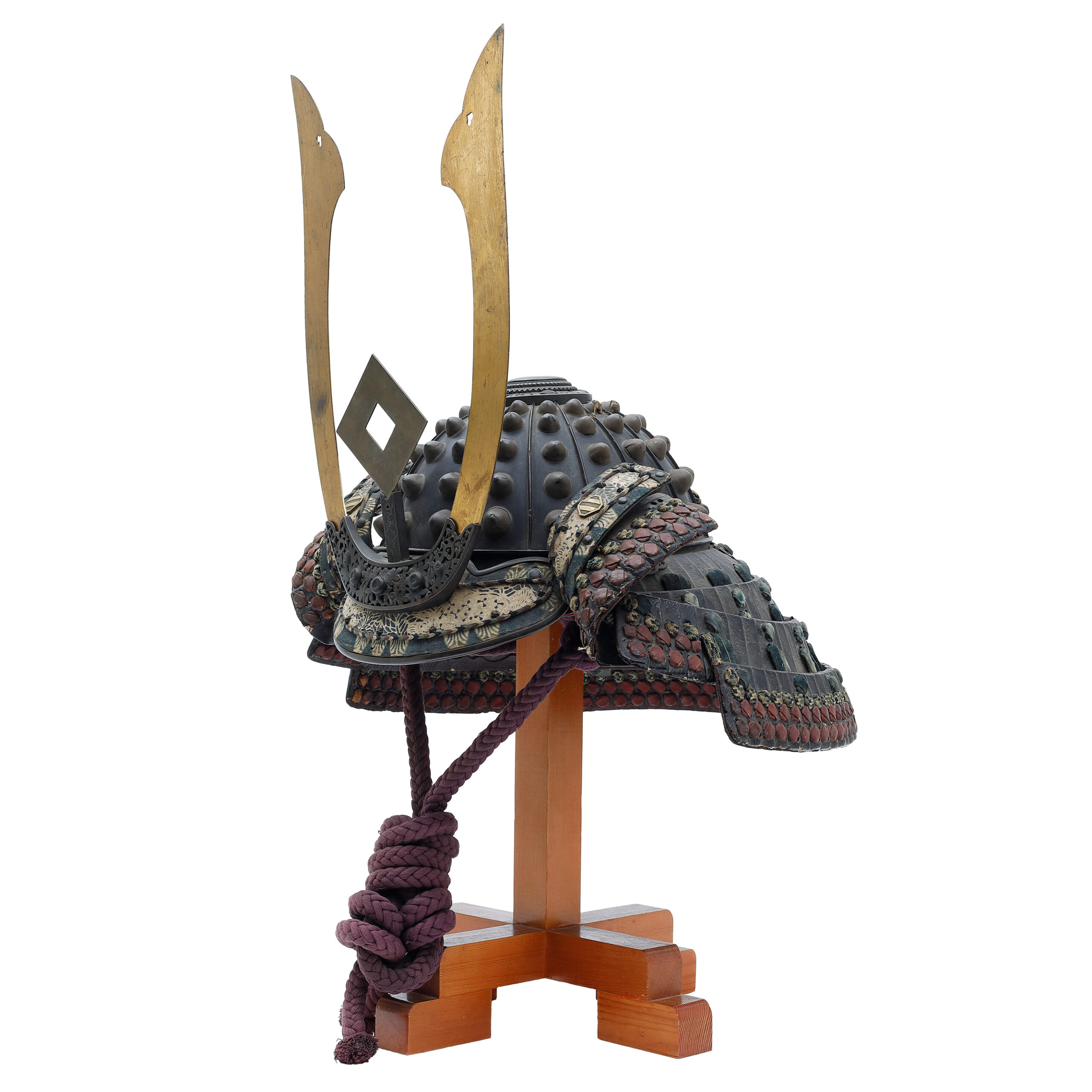

The Kuwagata (鍬形) is attached to this helmet. It is a kind of Maedatemono (前立物, front decoration) to dignify the appearance. This Kabuto’s Kuwagata has a shape in which its tip is bifurcated. It is made of two plates and is colored with golden paint. Although there are minor damages, such as scratches, these are traces of its long history. We hope you will enjoy it as an antique texture.
This Kabuto also has another Maedatemono. You could see a rectangular-shaped decoration with a hole on its front. We are considering two possibilities for this motif. One of our ideas is that the Sumitate Hitotsume Mon (隅立て一つ目紋). This design is also simply called the Meyui (目結) or Hitotsume (一つ目). It is categorized as the Menyui Mon (目結紋). The name Meyui comes from the tie-dyeing of the dyeing pattern. Therefore, the Meyui Mon has another name, Kanoko Shibori (鹿子絞り) and Koukechi (纐纈). It is said this design was used for many arms; we imagine it was one of the familiar motifs for Samurai warriors.
The second point of view is the Kuginuki Mon (釘抜紋). This pattern has almost the same appearance as the crest mentioned above. When comparing these two crests, it is said that the one with a slightly larger hole inside the square is the Kuginuki Mon. A Kuginuki (釘抜き) is a nail puller used to remove hammered nails. Due to the pronunciation “Kuginuki,” this crest was associated with the following expressions: Kugi-wo Nuku (釘を抜く, pull out nails), Kuki-wo Nuku (九城を抜く, pass nine castles). In this way, there is a theory that it came to be used among Samurai families because of the auspiciousness of ‘capturing enemy castles.’ Since its simple design stands out even from a distance, and because it could be easily drawn as a banner mark on battlefields, many Samurai families used the Kuginuki Mon.

Now, please focus on the ends of this Kabuto. This part is called the Fukikaeshi (吹き返し). It protects the face from swords and also shows its beautiful workmanship.
Family crests are sometimes designed on this part, as seen on this Kabuto. You could find golden mark is attached. This geometric design family crest is called the Simikirikaku-ni Hutatsu Hiki Mon (隅切り角に二つ引き紋), which is categorized in the Hikiryo-Mon (引両紋); it is a simple pattern with two horizontal lines in the circle. In ancient times, Samurai families had a custom marking the flag with a god’s name and drawing a black bar below it. By doing this, they prayed to Shinto spirits; their luck in a war would last for a long time. However, the custom was gradually changed its manner, and only the black line has remained. Because of this history, there is a close connection between Hikiryo-Mon and Samurai families. It is also said that these lines represent dragons. As the dragon pattern has been treated as an auspicious design, it is possible to compare lines to this sacred beast. Ashikaga Takauji (足利 尊氏, 1305-1358), who opened the Muromachi government, used this Hikiryo-Mon for his family crest.
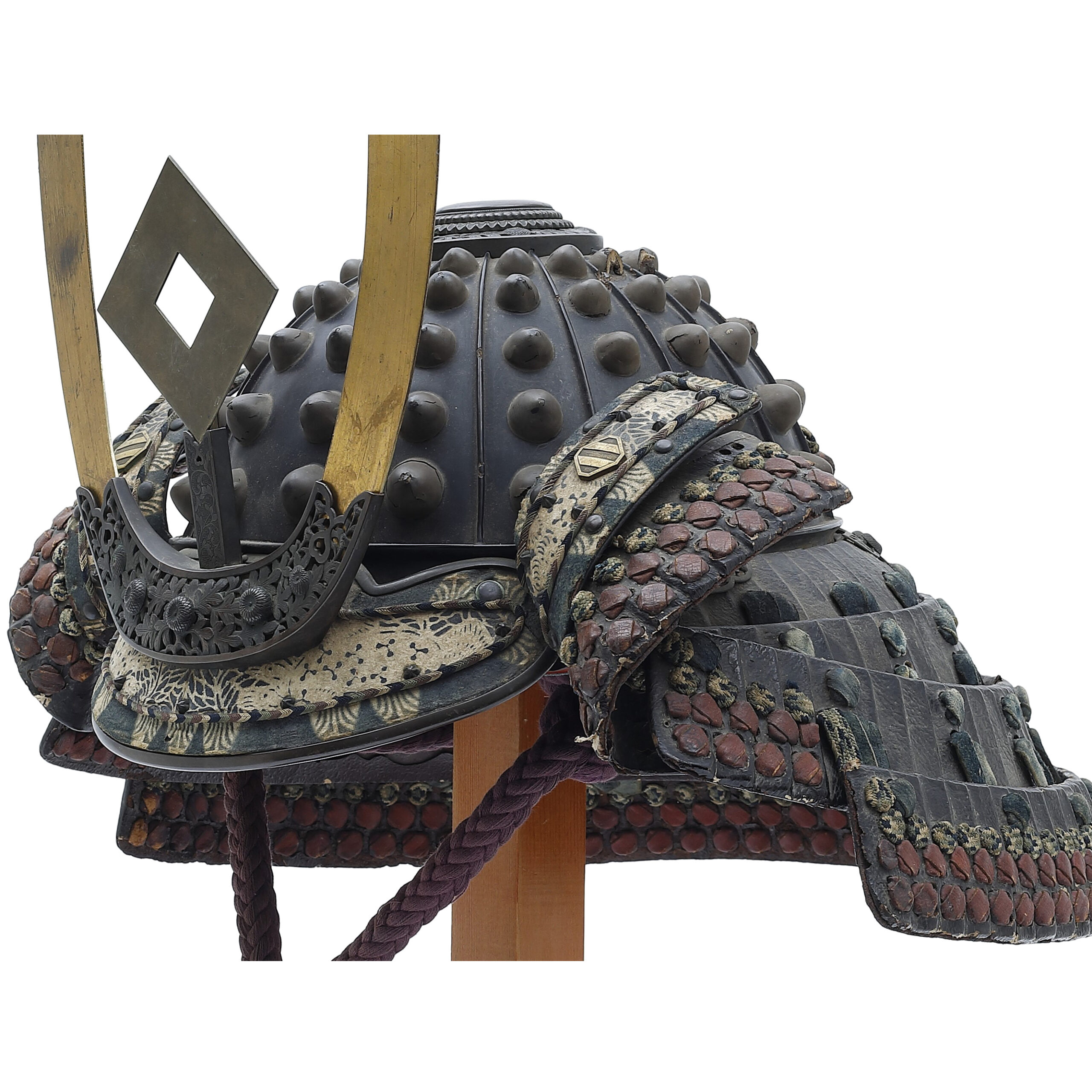
Certification: Koshu Tokubetsu Kicho Shiryo Certificate
The certificate was issued by The Association for the Research and Preservation of Japanese Helmets and Armor, which is the most trusted Japanese armor appraiser in Japan. Koshu Tokubetsu Kicho Shiryo means especially precious cultural article. It is ranked as the second highest of five rankings.
This helmet was authenticated on October 26th, 1980, as a Koshu Tokubetsu Kicho Shiryo, and this paper mentions that this item was made in the middle of the Edo period. You can receive these original authentication papers.
An English translation of the certificate is available on request. We won’t charge any additional fee.

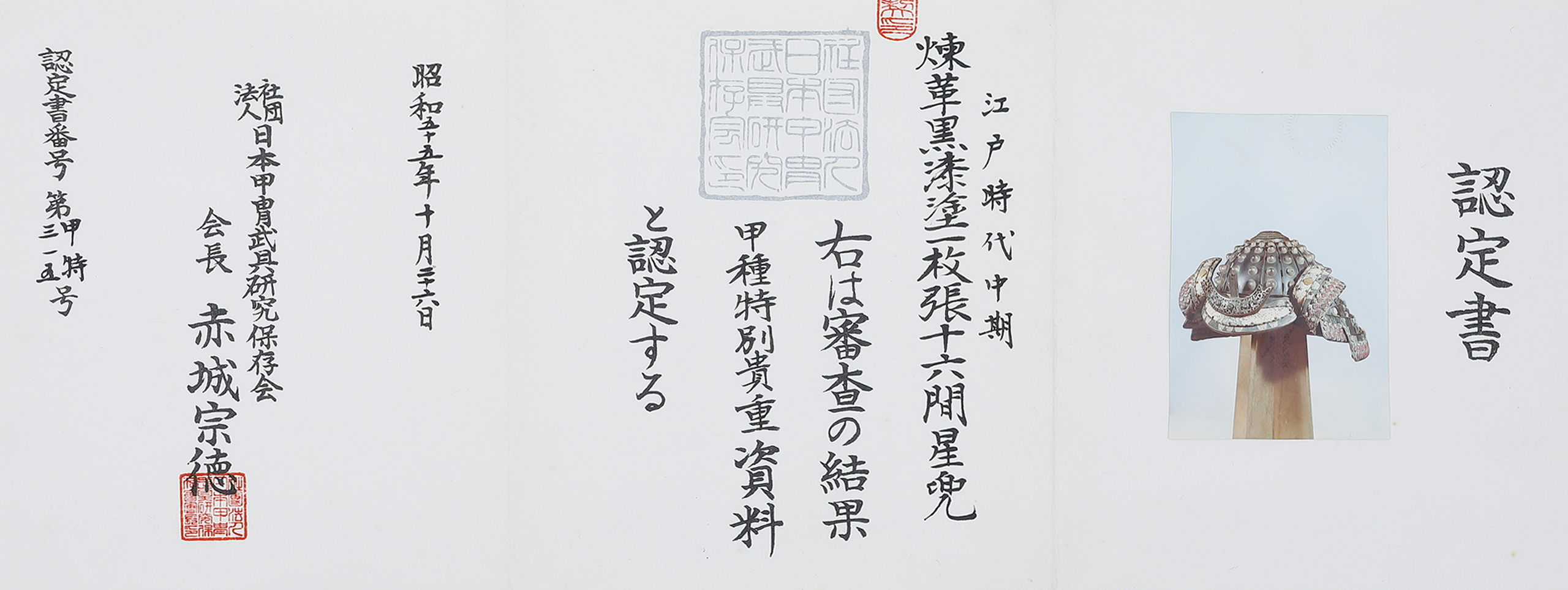
【About us】
Samurai Museum is located in Tokyo, Japan, exhibiting antique artifacts related to the Samurai history. Samurai Museum Shop is the place for those who are interested in Japanese culture and craftsmanship. We deal with antique Samurai swords/armor, traditional crafts made in Japan and so on.
【Antique Japanese helmet (Kabuto) and Export process】
After receiving the full payment from you, we will apply for its export permit from the Board of Education to legally export the helmet to other countries. It normally takes around 2-4 weeks to receive this permit. And we would like you to expect at least 1.0-1.5 months for your order to arrive at your given address after you ordered.
【Payment Method】
We accept payment through Stripe (Credit card), PayPal, Apple Pay or ChromePay, all of which are secure payment methods. Also, you don’t need to make an account on Stripe for the checkout. If you prefer other payment method, please contact us. After confirming your payment, we will apply for an export permit. You may either pay in JPY, USD, AUD, CAD, EUR, CHF or GBP. The price is set in Japanese Yen. Prices in other currencies are automatically calculated based on the latest exchange rate.

【Shipping Duration】
We normally ship via EMS (Express Mail Service) provided by Japan Post. It usually takes at least 5-14 days to deliver the package after you place an order.
We offer Free International Shipping as long as we can ship your order by EMS. If you prefer other shipping carriers, please contact us.
We will inform you of the order’s tracking number via email. Please make sure you fill out your valid email address correctly.
*If you like to make sure if EMS shipping is available to your country, please contact us.

【How to make sure the condition】
Please keep in mind that what you are going to purchase is an antique item. We uploaded high resolution photos for you to check its condition thoroughly. If you like to see more photos with different angles, please feel free to contact us. We will be happy to send them to you so that you can make informed decision. It is essential for us to know that you are happy with your choice of a sword. and we are prepared to use the best of our ability to serve you.
【How To Contact Us】
Please contact us through email, Facebook Messenger or Live Chat if you have any questions. You can find each icon on the right side of the website. Please click one of them to reach us. We will reply to you within 1-2 business days.
【How To Preserve Antique Samurai Armor/Helmets】
Dryness, humidity, and bad ventilation might deteriorate the condition of antique Samurai armor/helmet. The best temperature to preserve Samurai armor/helmet is around 20℃ in Celsius, and humidity should be about 60%. Direct sunlight should be avoided. We recommend storing armors/helmets in a room with good ventilation. If you like to display them outside the boxes for a prolonged time, we suggest using a glass case in order for dust not to be accumulated easily. In case you don’t use a glass case, please make sure to regularly dust off from the armor/helmets by using a soft brush made of delicate cloth or brush for painting.
If you like to know more about the preservation of this armor, please feel free to contact us.
